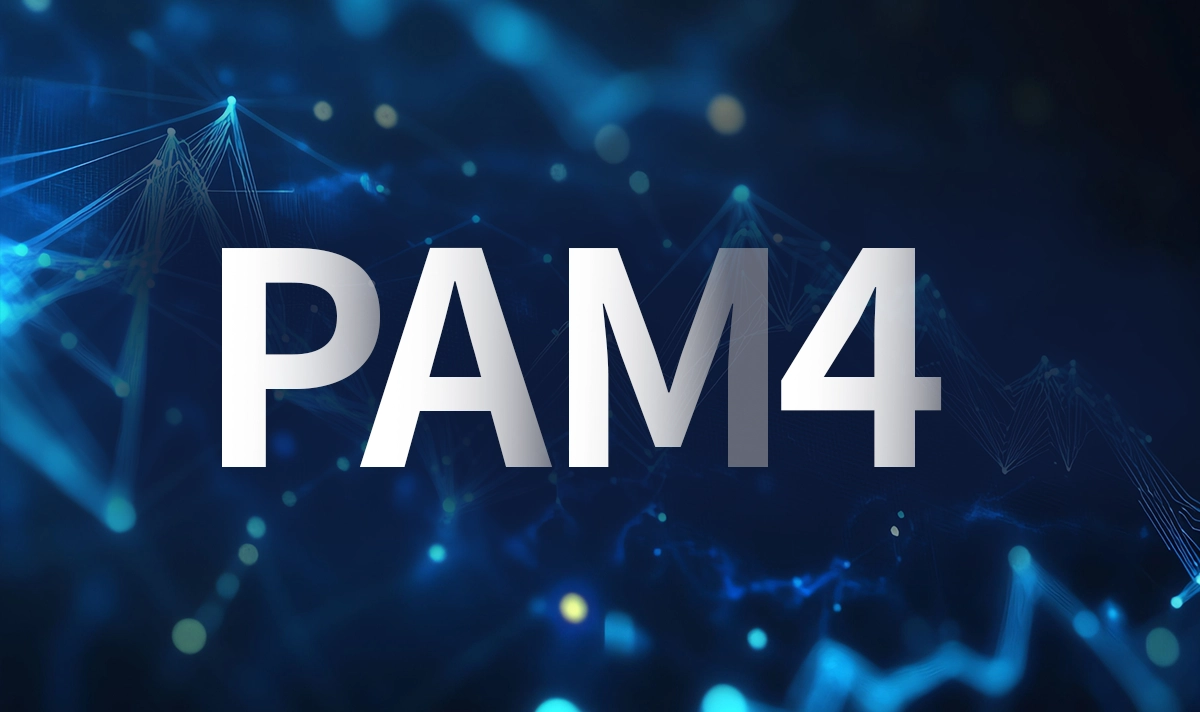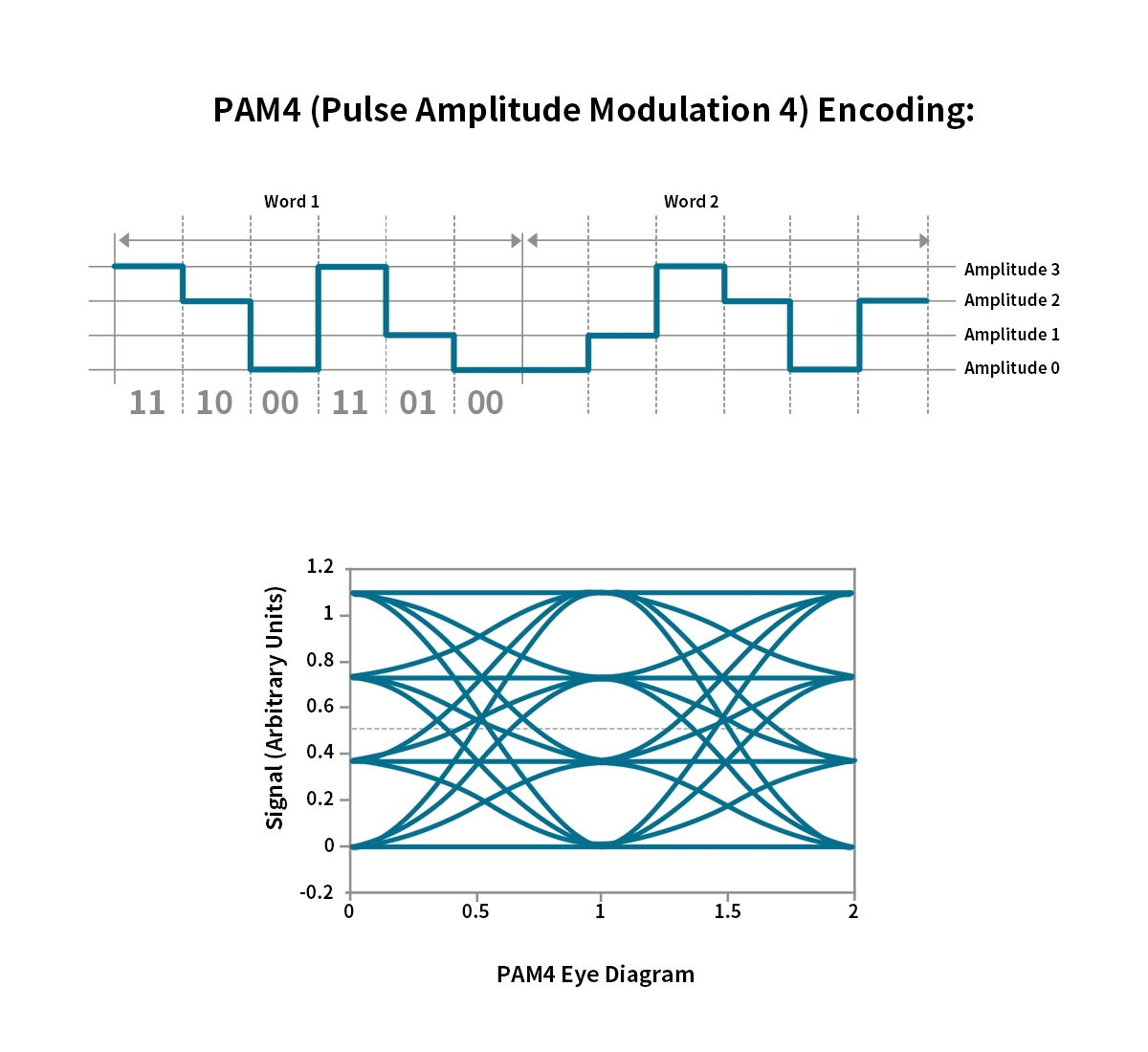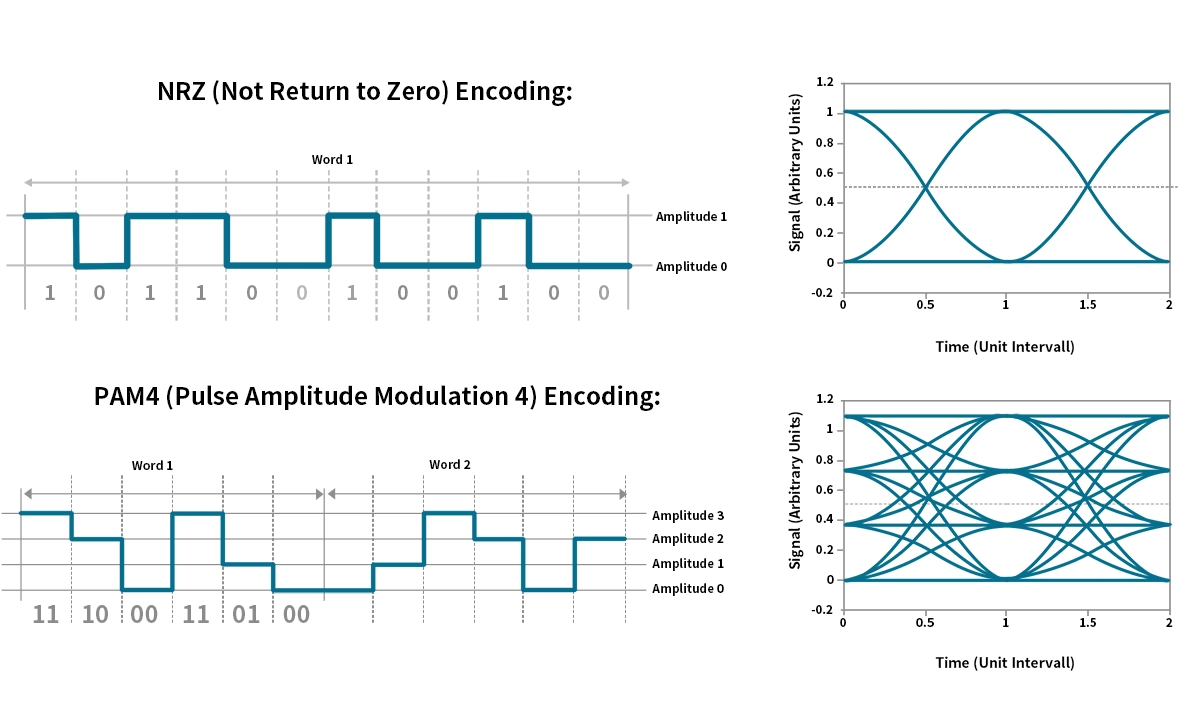
The relentless surge in global data consumption – fueled by cloud computing, AI, 5G, and streaming – constantly pushes the boundaries of network infrastructure. Traditional Non-Return-to-Zero (NRZ) signaling, the workhorse of previous generations, is hitting fundamental physical limits at data rates beyond 25Gbps per lane. Enter PAM4 (4-level Pulse Amplitude Modulation), the critical modulation scheme enabling the next leap in speed for high-speed optical transceiver modules and electrical interfaces. But what exactly is PAM4, and why is it so crucial? Let's dive in.
▶ Key Takeaways
PAM4 uses four signal levels to send two bits at once. This doubles data speed without needing more bandwidth.
Older methods like NRZ are slower than PAM4. PAM4 makes data faster but needs better error correction. It also needs smarter signal processing because the voltage levels are closer together.
PAM4 is used in fast networks and data centers. It is also used in optical systems. These places need to handle more data from cloud, streaming, and 5G.
PAM4 has problems like being sensitive to noise. Signal quality can also be an issue. Advanced equalization and error correction help keep data safe and reliable.
Learning PAM4 helps you understand fast data links. It also gets you ready to work with today’s fastest network technology.
▶ Beyond NRZ: Why We Need PAM4
NRZ, also known as PAM2, uses two voltage levels to represent digital data: a high level for '1' and a low level for '0'. It transmits one bit per symbol cycle. Simple and robust, it served us well for decades. However, as data rates climb towards 56 Gbps, 112 Gbps per lane, and beyond, NRZ faces significant challenges:
Bandwidth Limitations: Transmitting faster NRZ signals requires exponentially higher channel bandwidth (proportional to the baud rate). Copper traces on PCBs, electrical connectors, and even optical components struggle to support these frequencies without severe signal degradation.
Signal Integrity Challenges: Higher baud rates shrink the "eye" opening in signal integrity diagrams, making the signal far more susceptible to noise, jitter, and attenuation. Error rates skyrocket.
Power Consumption: Achieving the necessary signal integrity at extreme NRZ speeds often requires complex, power-hungry equalization techniques.

PAM4: Doubling the Data, Not the Baud Rate
PAM4 overcomes these limitations by fundamentally changing how data is encoded. Instead of two levels, PAM4 uses four distinct voltage levels. Each level represents a unique 2-bit combination:
Level 0:
00Level 1:
01Level 2:
10Level 3:
11
The key advantage? PAM4 transmits two bits of information per symbol cycle, compared to NRZ's single bit. This means, for the same baud rate (symbols per second), PAM4 delivers double the data rate.
▶ Illustrating PAM4 vs. NRZ

Feature | NRZ (PAM2) | PAM4 | Advantage of PAM4 |
|---|---|---|---|
Levels | 2 (0, 1) | 4 (00, 01, 10, 11) | Enables more data per symbol |
Bits/Symbol | 1 | 2 | Doubles data rate at same baud rate |
Baud Rate for Target Data Rate | High (e.g., 56 GBaud for 56Gbps) | Lower (e.g., 28 GBaud for 56Gbps) | Reduced channel bandwidth requirement |
Signal Complexity | Lower | Higher (smaller voltage margins) | NRZ simpler, but PAM4 necessary for speed |
Noise Sensitivity | Less sensitive per bit | More sensitive per bit | Requires more sophisticated DSP |
Typical Applications | <= 25/28Gbps per lane | 56Gbps, 112Gbps, 224Gbps per lane | Enables next-generation speeds |
▶ How PAM4 Works: Signal Generation and Challenges
Generating and interpreting a PAM4 signal is more complex than NRZ:
Transmitter: The input data stream is split into pairs of bits (
00,01,10,11). The transmitter's driver circuit then generates an analog signal with one of four precise voltage amplitudes corresponding to each 2-bit combination.Channel: The signal travels through the physical medium (PCB trace, cable, fiber optic link). It suffers attenuation, distortion, and noise.
Receiver: This is where complexity significantly increases. The receiver must distinguish between four voltage levels, not just two. The voltage difference between adjacent levels (e.g., Level 1 to Level 2) is only one-third of the total NRZ swing. This smaller eye height makes PAM4 inherently more sensitive to:
Noise: Random fluctuations can easily push a signal level into the decision region of an adjacent level.
Attenuation: Signal loss reduces the amplitude, shrinking the eye further.
Distortion (ISI): Signal spreading over time causes symbols to interfere with each other.
Digital Signal Processing (DSP): To overcome these challenges, modern PAM4 systems rely heavily on sophisticated DSP at both ends:
Transmitter: Employs techniques like Feed-Forward Equalization (FFE) to pre-shape the signal, counteracting anticipated channel distortion.
Receiver: Uses powerful equalization (e.g., Continuous Time Linear Equalization - CTLE, Decision Feedback Equalization - DFE) and often Forward Error Correction (FEC) to open the eye diagram, compensate for losses/distortion, and correct errors caused by noise and the tight level spacing. FEC adds some overhead but is essential for achieving acceptable bit error rates (BER) in PAM4 systems.
▶ The Impact: Where PAM4 Powers the Future
PAM4 is the foundation for the current and next wave of high-speed interfaces:
400 Gigabit Ethernet (400GbE): Primarily uses 8 lanes of 56Gbps PAM4 (8x50G) or 4 lanes of 112Gbps PAM4 (4x100G).
800 Gigabit Ethernet (800GbE): Leverages 8 lanes of 112Gbps PAM4 (8x100G).
1.6 Terabit Ethernet (1.6TbE): Emerging standards utilize 8 lanes of 224Gbps PAM4.
Data Center Interconnects (DCI): Critical for linking massive data centers handling enormous traffic flows.
AI/ML Clusters: High-bandwidth, low-latency interconnects between GPUs/TPUs are essential, heavily relying on PAM4-based optics and copper.
Next-Gen Fibre Channel: Supporting higher storage network speeds.
▶ LINK-PP Optical Transceivers: Your PAM4 Solution

Implementing reliable PAM4 technology demands highly engineered optical transceiver modules. LINK-PP is at the forefront, designing and manufacturing cutting-edge PAM4 transceivers that meet the rigorous demands of modern high-speed networks. Our modules incorporate advanced DSP, high-quality components, and rigorous testing to ensure optimal signal integrity and performance in challenging environments.
Key LINK-PP PAM4 Optical Transceiver Products:
LINK-PP LQD-CW400-FR4C: High-performance 400G modules for 2km reach using single-mode fiber, ideal for data center spines and interconnects. (Perfect for your 400G data center fabric needs)
LINK-PP LQ-M85200-SR4C: This transceiver is mainly used in short-range transmission scenarios such as data centers and enterprise networks to achieve high-speed data transmission.
These reliable optical modules are engineered to handle the complexities of PAM4 signaling, ensuring your network achieves the necessary bandwidth density and performance with low power consumption.
▶ The Benefits and Trade-offs of PAM4
Benefits:
Doubled Bandwidth Efficiency: Achieves higher data rates without doubling the baud rate/channel bandwidth.
Enables Higher Speeds: Makes 400G, 800G, and 1.6T feasible with existing and near-future channel capabilities.
Backward Compatibility: Can often operate over existing cabling infrastructure designed for lower NRZ rates (though distance may be reduced).
Trade-offs:
Increased Complexity & Cost: Requires sophisticated DSP and potentially higher-power ASICs/ICs.
Higher SNR Requirement: Smaller voltage margins demand cleaner channels and better signal integrity design.
DSP Power: The powerful equalization and FEC engines consume significant power.
FEC Overhead: Error correction adds latency and uses a portion of the raw bandwidth.
▶ Conclusion: PAM4 is Here to Stay
PAM4 is not just a niche technology; it's the essential enabler for the high-speed networks powering our digital world. While it introduces complexity, the benefit of doubling data rates without proportionally increasing the required channel bandwidth is indispensable for scaling networks to meet insatiable demand. Understanding PAM4 is key for anyone involved in designing, deploying, or managing modern data center, cloud, telecom, or enterprise networks.
Ready to harness the power of PAM4 in your network?
Explore LINK-PP's comprehensive range of high-performance PAM4 optical transceivers, including our industry-leading 400G and 800G modules. Our experts can help you select the perfect cost-effective optical module solutions for your specific bandwidth, reach, and density requirements.
Request samples of PAM4 optical transceivers ➞
FAQ
What does PAM4 stand for?
PAM4 stands for Pulse Amplitude Modulation with four levels. You use four different voltage levels to send data. Each level represents a unique pair of bits.
Why do you need error correction with PAM4?
You need error correction because PAM4 signals have voltage levels that are close together. Noise can easily cause mistakes. Error correction helps you fix these mistakes and keep your data safe.
Can you use PAM4 for long-distance links?
You usually use PAM4 for short or medium distances. Over long distances, the signal can lose quality. You may need extra equipment to keep the signal clear.
How does PAM4 help increase data rates?
PAM4 lets you send two bits with each symbol. You double your data rate without using more bandwidth. This makes your network faster and more efficient.
Is PAM4 only for fiber optics?
No, you can use PAM4 with both copper and fiber optic cables. Many data centers use PAM4 for both types of connections.
Tip: If you want the fastest speeds, learn how PAM4 works in your network.


